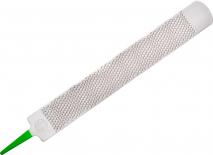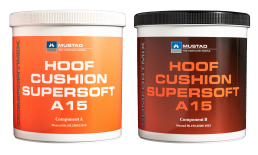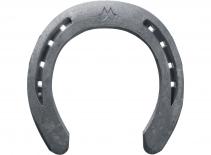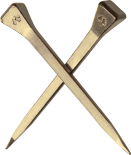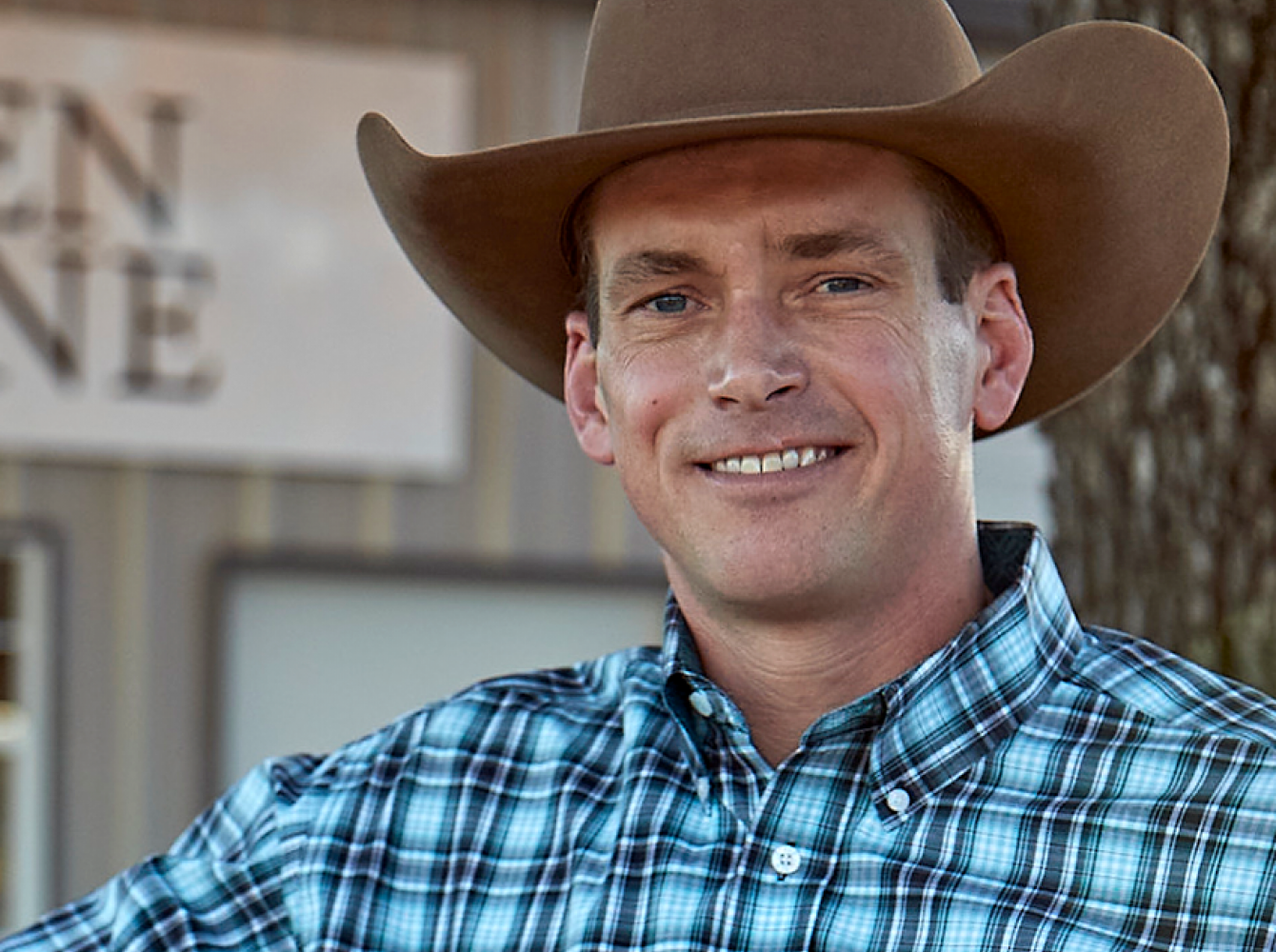
Lee Olsen, CJF: The Olsen Equine Approach to Farriery
Farriers make every effort to help horses perform at their best. Lee Olsen applies the same philosophy to his business.
The High-Performance Farrier
When Lee Olsen realized that his strategy of making more by working more was breaking his back and robbing him of family time, he transformed his business. He switched to a predominantly haul-in operation, kept 20% of his time open for new clients, upped his fee structure, built a 3,200-square-foot facility, and added apprentices.
Since adopting this new business model, Lee has made some refinements. But the core concept has proven remarkably sound.
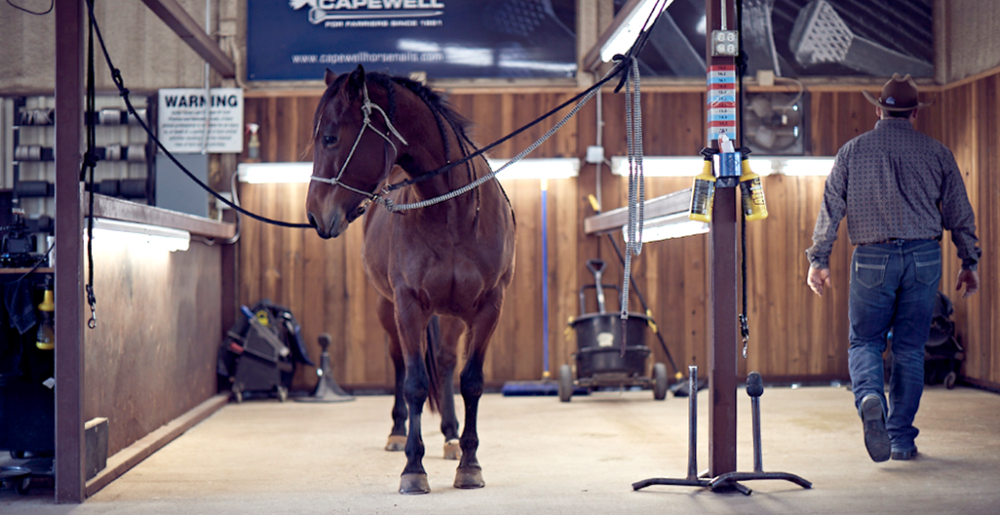
Refining the Apprentice Model
Farriers educating apprentices is a business model most people recognize. Lee’s approach formalized the relationship between young farriers and their mentors, adopting a four-year model where new farriers progress from sweeping and cleaning to shoe removal, shoeing, and forging.
Given his experience, Lee’s program has apprentices work toward certification—their pay is based on it, with journeymen making the most. For Lee, tying pay to certification “doesn't have much to do with the credentials, but working towards goals has a lot to do with the person you become.”
He provides apprentices with housing, lunches on weekdays, good wages keyed to their achievements, and access to the forge and materials. He has learned that to maintain their focus, apprentices cannot do side work. Though additional work can be tempting for apprentices, he insists on a four-year commitment to make sure horses under their care will be skillfully handled. While now pursuing seminary school in Florida, former apprentice Tyler Robinson, CJF, continued working for Olsen Equine past the four-year agreement, refining his skills and becoming an asset to the business.
Lee believes that clinics are a great way to find prospects for his apprenticeship program. “You get to see them frustrated. You get to see their horsemanship. You get to see how they handle the ups and downs of learning.”
Skills and horseshoeing school aren’t essentials at this stage. “I don't care if they have any skills—actually the less, the better. I just want good character, a hard work ethic, and strong morals.”
The Challenges of Haul-In
The shift to a predominantly haul-in model changed the nature of his business. Lee had to say goodbye to some cherished clients. “We worked for some of the most famous people in the Western and English industries, but at the end of the day, my kids don't care who I work for. They just want to see their dad. I encourage every farrier, any location and skill level to consider doing the same.”
Of course, a haul-in model eliminates travel time, but it also enables other efficiencies. Some days, as a horse arrives at nine, a horse who was brought in at eight is being finished, and the horse who was brought in at 8:30 is finishing up prep. The numbers aren’t the goal, though. Because the team isn’t traveling and has a clear strategy for moving a horse from check-in to happily shod, Lee and his team can ensure every animal gets the time and care they need.
Since they value Lee’s services, people traveling long distances with haul-ins are more likely to bring challenging cases. For a man who has spent his life around horses, helping animals with a long history of undiagnosed trouble is both incredibly rewarding and incredibly trying. To meet the needs of horses that come to him, he’s focused on figuring out what new techniques and technology might best serve each unique case.
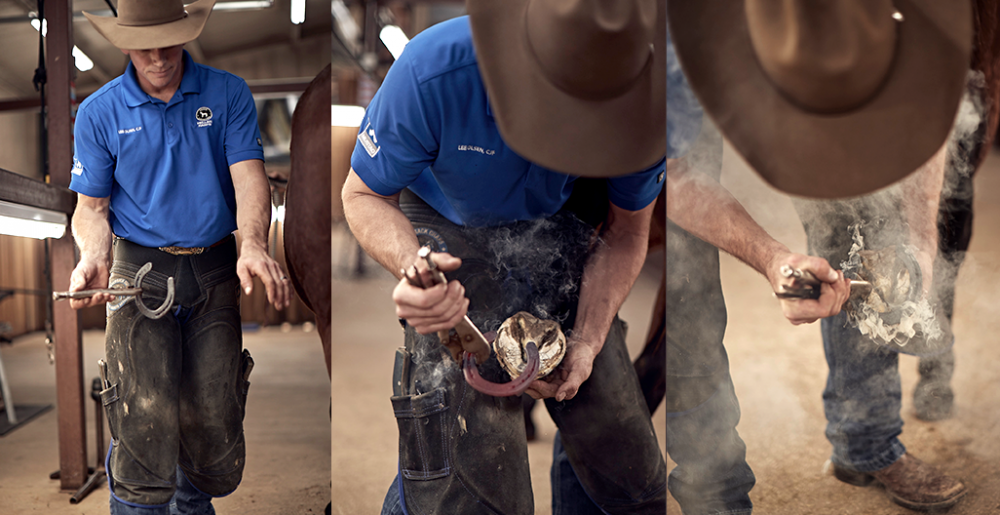
Getting Better Tools Means Investing in Better Technology
Lee’s haul-in business transformed again when the farrier began incorporating more sophisticated technology into his process. By teaming up with a local vet, the Olsen Equine team has been able to utilize radiographs before and after shoeing, meant to produce higher quality work and, ultimately, further help the horses they work on. While the initial x-ray shows what the problem is, the second gives a clear indication of whether or not the shoeing helped. Lee finds that both images are needed to ensure issues are being properly addressed with the right shoeing strategies.
When it comes to shoeing, his tools also include Mustad products. Lee likes Heller eXcel Legend rasps, which he appreciates for their sharpness and durability. Likewise, he frequently uses the Comfort Mix Hoof Cushion because of its excellent shock absorption. He’s found that this dental impression material is instrumental in providing relief to horses with laminitis.
Lately, he’s been reaching for Mustad Endura MX50 Nails. Lee says the nails “really make a big difference. They drive higher every time with minimal effort– a very strong nail with lots of holding power.” While he uses a wide range of shoes, from the St. Croix Forge Eventer Plus and Mustad LiBero Equi-Librium, “on problematic horses, the Therapeutic Equi-Librium Roller can be a game changer.”
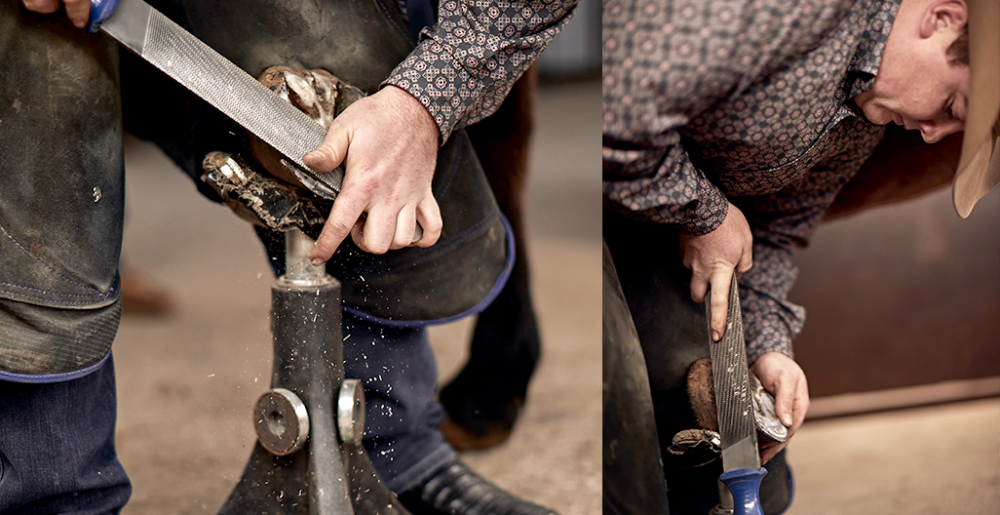
His Next Step—Spreading the Word
Thinking about efficiencies is how Lee built his business. He’s currently looking to hire an office manager to help him both with the administrative side of the business and with expanding the practices’ social media reach.
Apart from his own experience, He’s learned a great deal about the business side of horseshoeing from mentors like Grant Moon and his own uncle, Erdean Olsen. With strategies on how to run a successful business and tips on investing, “my uncle Erdean Olsen, who is a retired stockbroker, helped me transform my own business.” Despite the amount of technical information available about shoeing, Lee believes that there is a detrimental lack of resources for running a successful farrier business. The Texas farrier wants to correct the discrepancy with online business courses, which he hopes to gear toward farriers and other small business owners.
By applying what he’s learned, Lee insists that farriers can have “more time or more money—and I think everybody’s a fan of those.” Lee uses his extra time now to enjoy life with his two children and wife, Jamie, herself an experienced nurse practitioner and accomplished competitive barrel racer.
Having transformed his own business, Lee aims to transform the industry. Here’s the team that is helping him do just that.
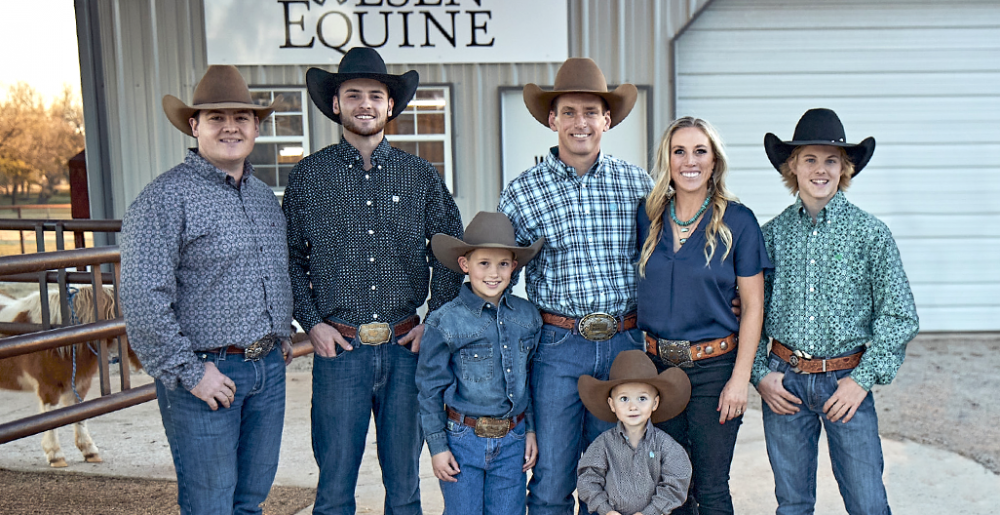
Meet The Current Team
Jamie Olsen, Nurse Practitioner & Professional Barrel Racer
Jamie combines being a mom and a nurse practitioner– her expertise is interventional pain management through 9 years of emergency room work— with being a competitive barrel racer, named Rookie of the Year on the Texas circuit. She and Lee met in their amateur rodeo days and balance life at home with the various business interests they have. Jamie’s passion and talent are evident not only in her blooming barrel racing career but in her ability to balance the difficulties of raising a family with the demands of her professional pursuits.
Kelton Harris, Apprentice, CJF
When Kelton attended one of Lee’s clinics, he had zero experience. Now, he’s a certified journeyman with 3 years plus of experience and is working toward his therapeutic endorsement. He says, “The biggest thing I’ve learned is just how much detail goes into every shoe, and how much understanding of anatomy and pathology is really needed.” Outside of his work with Lee, you’ll find that Kelton is an impressive basketball player.
Jeb Hunt, Apprentice, CJF
Jeb attended a clinic to learn basic hoofcare skills, which would be useful at his family’s ranch in South Dakota. Then, after a hiatus where he worked as an auctioneer, the apprentice accompanied Lee to Chris Cox’s dude ranch in Wyoming–-that encounter led Jeb to apply for an apprenticeship at Olsen Equine. Jeb finds it especially gratifying to work on negative plantar and palmer angle cases, because the results are so striking. In his free time, he’s been working on his roping skills, which he plans to explore even more skillfully in the future.
Hollis Wilhite, Apprentice
As the newest member of the team, Hollis is starting to pull shoes and finish, as he works toward certification. Lee says that, for someone so young, he has remarkable listening skills and a strong work ethic.
Want to see more of Lee’s work?
Follow Olsen Equine on Facebook or subscribe to his YouTube channel.
